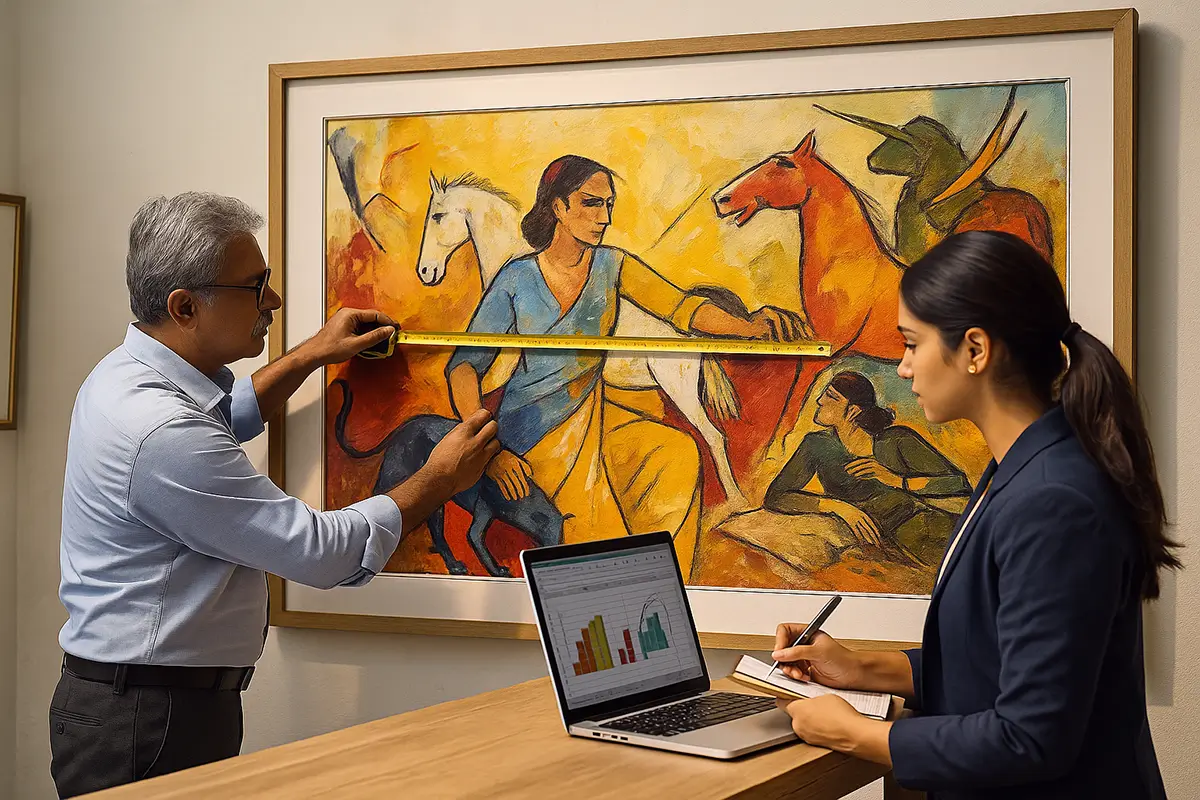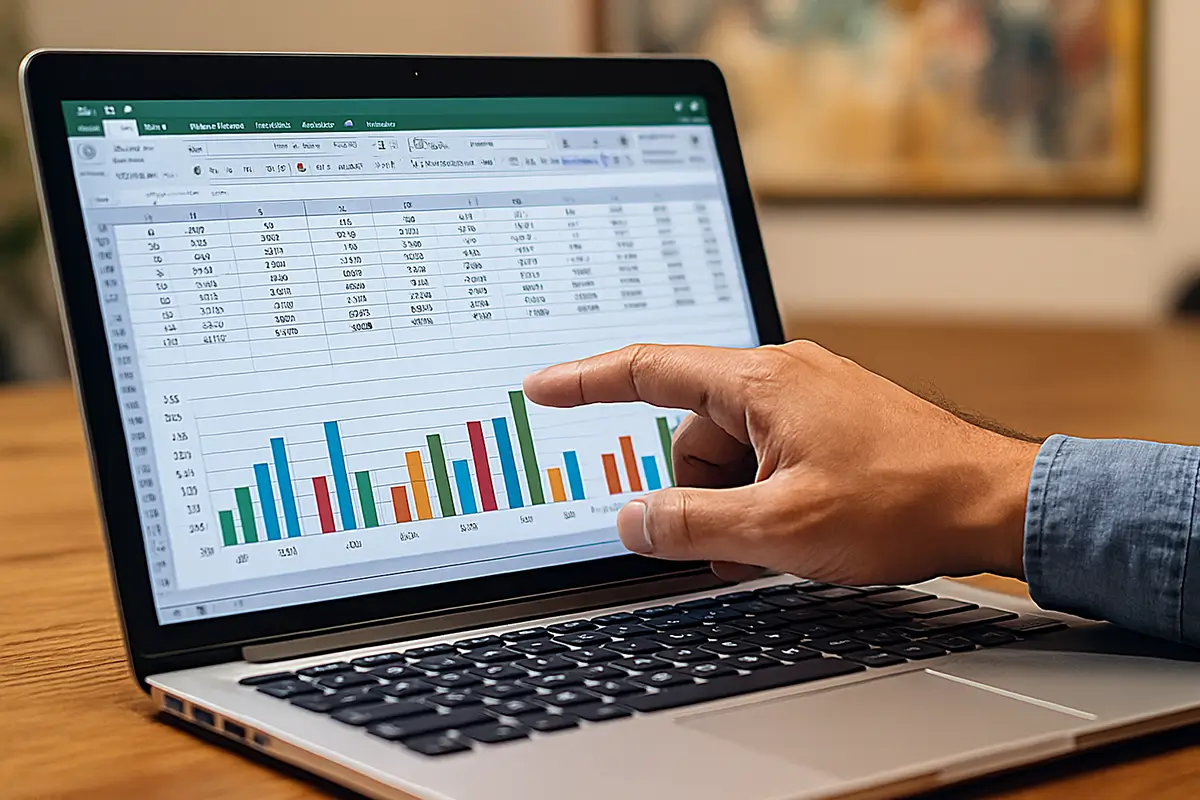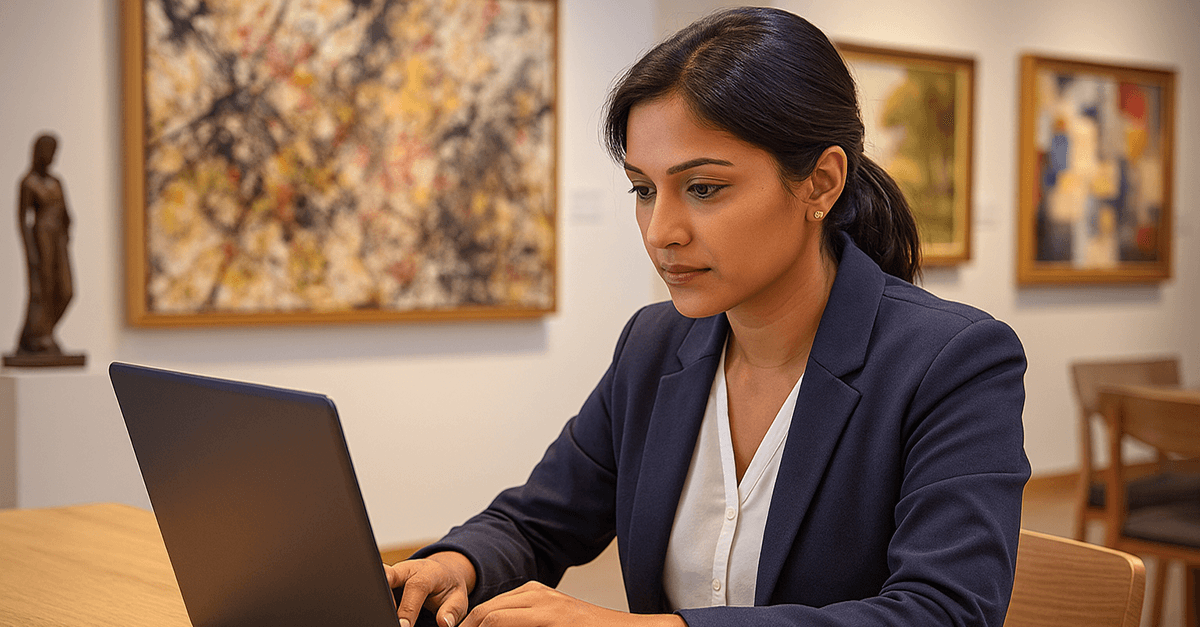Introduction: Lessons learned through real-world examples
In theory, most collectors agree that valuation and authentication are important. But it’s often only when something goes wrong—an insurance claim, a sale, an inheritance dispute—that the importance of proper documentation becomes painfully clear.
Across India, both private collectors and corporates have seen firsthand how professional valuation and authentication services protect cultural assets and financial interests. These case studies illustrate exactly how the process works in practice, and why ignoring it can be costly.
The following anonymised but representative examples highlight how valuation and authentication safeguarded Indian collections—and in some cases, increased their worth significantly.
Case Study 1: Corporate Collection in Mumbai – The Insurance Lifeline
A large financial services company in Mumbai had built a collection of over 200 works across multiple offices. The collection included paintings by modern masters, sculptures, and textiles. While the works were displayed prominently, they had never been formally valued or catalogued.
The turning point
In 2022, a water leak during monsoon season damaged several works, including a large oil on canvas. The company filed an insurance claim but quickly realised that without valuations, their insurer had no baseline numbers to settle on.
How valuation helped
- A professional valuation report was commissioned, with replacement values assigned to each artwork.
- Condition reports documented both pre-damage and post-damage states.
- With these in place, the insurer approved claims at replacement value, ensuring the company could fund restoration and cover losses.
Outcome
The company avoided a potential shortfall of nearly ₹1 crore in claim settlements. Going forward, they adopted a biennial valuation cycle to ensure all works were insured at current values.
Lesson: Without valuation, insurance coverage is incomplete. With valuation, it becomes a lifeline.
Case Study 2: Private Collector in Delhi – The Authentication Wake-Up Call
A private collector in Delhi inherited several Bengal School works from his grandfather. The family assumed they were authentic and insured them at high values.
The turning point
When the collector attempted to sell a piece at an international auction, the auction house requested authentication. Upon review, questions were raised about one of the works’ attribution. The sale stalled.
How authentication helped
- A professional authentication process was initiated, combining provenance research, archival checks, and expert analysis.
- Three of the works were authenticated beyond doubt, significantly boosting their credibility and marketability.
- One work, however, was deemed misattributed.
Outcome
While disappointing for the family, the authentication process saved them from a public auction embarrassment and potential reputational damage. The authenticated works, when sold later, fetched significantly higher prices than if doubts had lingered.
Lesson: Authentication may reveal difficult truths, but it ultimately protects financial value and credibility.
Case Study 3: Family Legacy in Kolkata – Estate Planning Simplified
A prominent Kolkata family held an extensive collection of paintings, rare photographs, and artefacts accumulated over four generations. Upon the patriarch’s passing, the collection became a source of conflict among heirs.
The turning point
Each heir claimed certain works, but without valuation or proper records, disputes escalated. Some claimed that particular paintings were worth far more than others, leading to disagreements about division.
How valuation helped
- Independent appraisers were engaged to assign fair market values to each piece.
- A complete catalog with provenance and condition notes was prepared.
- Values were integrated into estate planning documents to ensure equitable distribution.
Outcome
Disputes were resolved without litigation, and heirs agreed on a fair split based on documented valuations. The process also enabled the family to consider donations of select works to museums, with accurate valuations supporting tax benefits.
Lesson: Estate planning with art is impossible without valuation. With it, inheritance becomes smoother and culturally responsible.
Case Study 4: Corporate Philanthropy in Bengaluru – Donation with Tax Efficiency
A large IT company in Bengaluru wanted to donate a portion of its art collection to a national museum as part of its CSR initiative.
The turning point
While the cultural intent was clear, the finance team needed clarity: how would the donation be valued for accounting and tax deduction purposes?
How valuation helped
- A valuation report established fair market values for all donated works.
- Documentation ensured that the museum could legally accept and register the donation.
- The company claimed deductions under Section 80G for its contribution, supported by professional valuation.
Outcome
The donation enhanced the company’s cultural credibility while also providing measurable tax efficiency.
Lesson: Valuation connects philanthropy with financial planning, making cultural contributions both meaningful and sustainable.
Case Study 5: Art Fair Purchase in New Delhi – Avoiding a Costly Mistake
A new collector purchased a contemporary painting at an art fair in Delhi. The gallery provided a certificate of authenticity, but little else.
The turning point
When the collector tried to insure the work, the insurer requested provenance documents and a valuation. The gallery’s certificate was deemed insufficient.
How authentication helped
- A professional provenance check confirmed the painting’s legitimacy.
- The authentication process created a full documentation package with condition report, valuation, and verified provenance.
- The insurer accepted the documentation, providing coverage.
Outcome
The collector avoided insuring a potentially risky asset and gained a complete ownership record that increased resale confidence.
Lesson: Certificates alone aren’t enough. Authentication must combine provenance, expert input, and valuation.
Case Study 6: Museum Loan in Chennai – Accountability Through Documentation
A private museum in Chennai loaned several works to an international exhibition. Before shipment, the host institution demanded condition and valuation reports.
The turning point
While the museum had general records, detailed valuations were missing. Without them, the loan agreement risked stalling.
How valuation and authentication helped
- Condition reports documented the state of each artwork before shipment.
- Valuation reports established replacement values for insurance coverage during transit.
- Authentication confirmed attribution, satisfying the host institution’s due diligence.
Outcome
The loan went ahead smoothly, with both parties protected. The process also enhanced the museum’s professional credibility for future collaborations.
Lesson: In global art exchanges, valuation and authentication are not optional—they are prerequisites.
Broader insights from these case studies
1. Insurance requires valuation
Without replacement values, insurers cannot (and will not) pay fair claims.
2. Authentication builds trust
Whether for auctions, donations, or loans, credibility hinges on provenance and expert validation.
3. Estate planning needs numbers
Art is non-fungible. Valuation ensures equitable division among heirs.
4. Documentation protects reputations
Collectors and corporates alike safeguard themselves from disputes and reputational damage with professional records.
5. Professional services close the loop
From cataloging to condition reporting, valuation and authentication are strongest when integrated into a complete service.
Best practices for collectors and corporates
- Revalue regularly (every 30–36 months).
- Authenticate early—don’t wait until sale or loan.
- Integrate with cataloging to build holistic records.
- Store documentation digitally as well as physically.
- Engage professionals rather than relying solely on gallery certificates.
Conclusion: Real protection lies in preparation
These case studies demonstrate that valuation and authentication are not abstract concepts—they are practical shields against risk, dispute, and financial loss.
For Indian collectors and institutions, the lesson is clear: invest in documentation before problems arise. With professional valuation and authentication, collections gain not only market credibility but also cultural legacy.
Learn more about our specialised Art Valuation Services. At TurmericEarth, we combine rigorous market analysis, expert authentication, and holistic documentation to ensure your collection is both financially secure and culturally respected.













